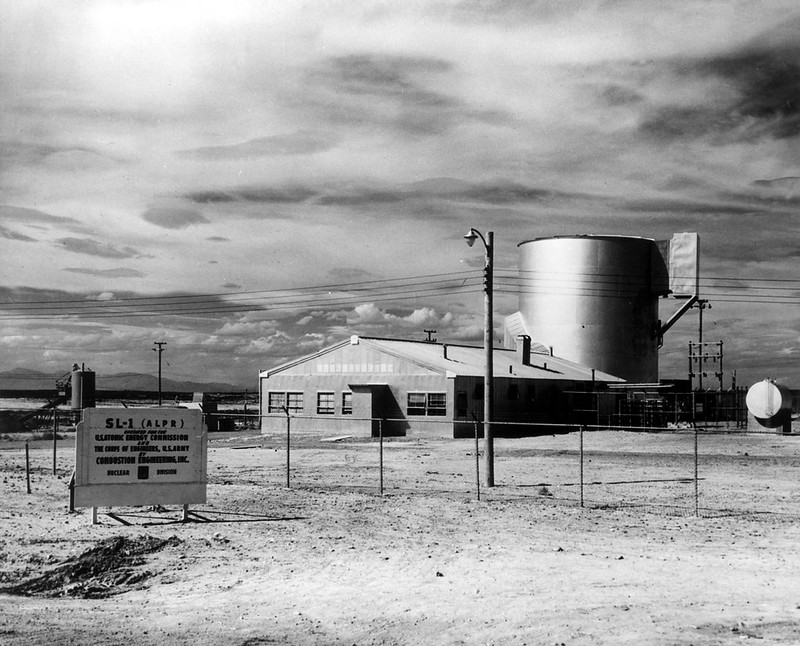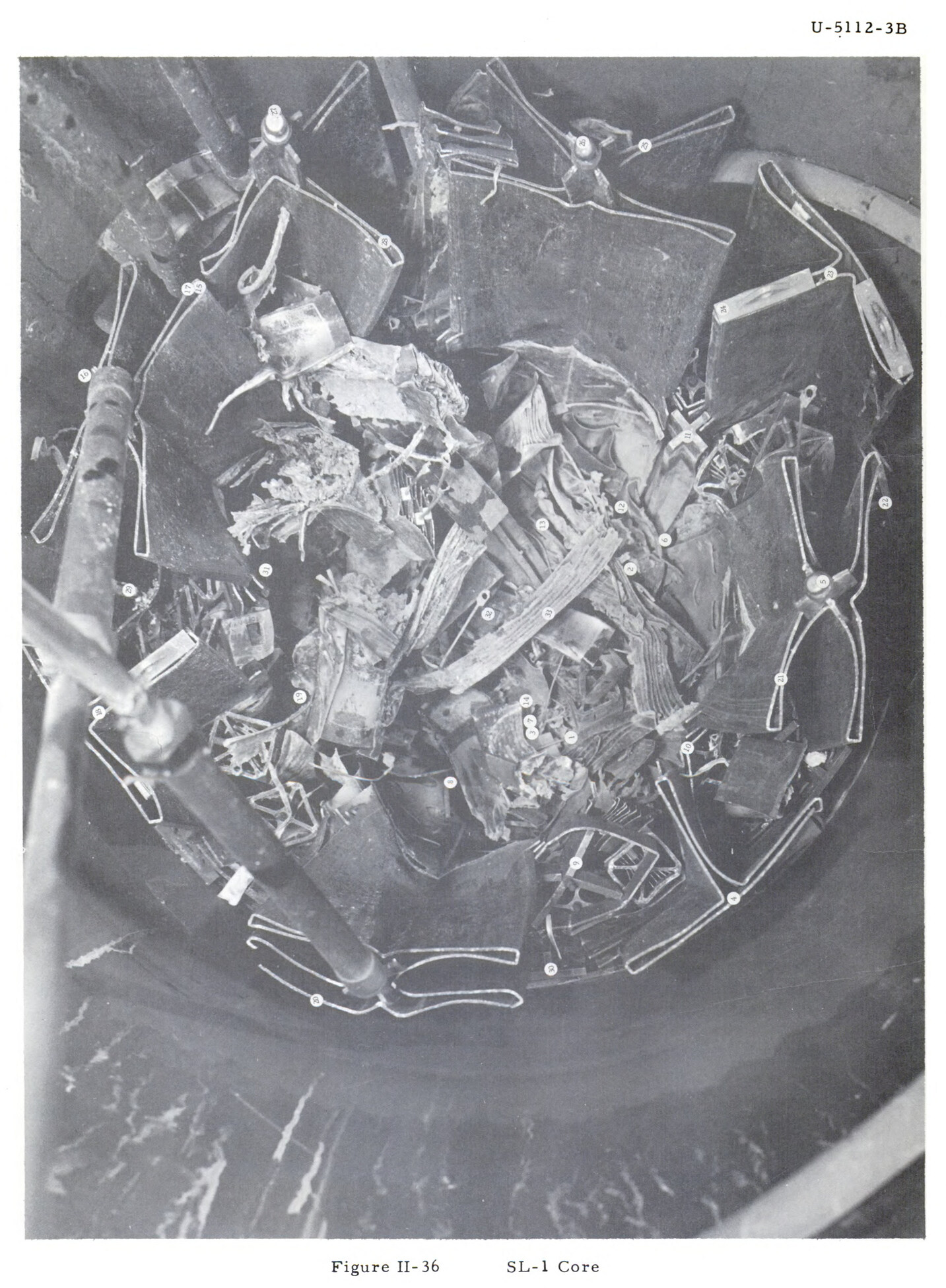The SL-1 disaster
By Nick Touran, Ph.D., P.E., 2022-09-27 , Reading time: 3 minutes

The SL-1 reactor before the incident. (Source: DOE)
What happened?
The Army’s SL-1 (Stationary, Low-power 1) in Idaho was part of the Army Package Power Program, previously called the Argonne Low Power Reactor, ALPR. It was designed to be built on the tundra above the DEW line to power radar stations. It suffered an explosion on January 3, 1961 that resulted in 3 gruesome casualties.

The destroyed SL-1 nuclear core after the accident. (From [1]).
Three military staff were on shift, working on the reactor head to adjust the control rod drives mechanisms and housing. For unknown reasons, one or more of them manually withdrew the central control rod to the 20-inch mark (well beyond specifications) with less than maximum exertion to start the reactor excursion. This put the reactor on a 4-millisecond period until the core peaked at about 20 gigawatts, for a total of 130 MW-seconds of nuclear energy. [1]
Steam formed in the core and accelerated the 7-foot column of water above it at 160 feet per second towards the upper head; a 10,000 psi water hammer. The momentum transferred to the shield plugs, which ejected at 50 feet per second, and then lifted the entire reactor head about 9 feet up. [1]. Two of the three men died instantly, one pinned to the ceiling by an ejected shield plug, and the other thrown sideways onto a shield [4].
Automatic heat detection alarms were received at the fire department of the National Reactor Testing Station around 9:01 PM MT. The AEC fire and security teams responded but found high radiation levels of 25 r/hr and withdrew [2]. Additional staff arrived to help and realized the three men on staff must still be in the building. The reactor floor dose rate measured 500 r/hr. Two men decided to enter, and they saw two men, one of whom was still moving. They withdrew and got more help. The still-living man was put on a stretcher and removed [2], but was declared dead soon after this.
Lessons
Limit the rate at which control rods can be withdrawn
A control rod is thought to have been held manually by a person who then pulled it out quickly. Later designs put rate limiting mechanisms in the drives that prevent them from being removed rapidly.
Don’t let a single control rod be enough to go supercritical
It should take more than 1 rod to go critical from a shut down position
Avoid water hammer
Do not put the reactor into a configuration where it has a tightly sealed lid and a partially filled tank. If the water hammer could not have developed the 10,000 psi pressure, this incident would not have been nearly as destructive.
Legacy
The SL-1 accident had a major impact on nuclear safety in many ways. The design principles were adjusted to factor in the lessons learned.
References and more info
- Final report of SL-1 recovery operation / SL-1 Project, Idaho
- ACCIDENTS AND INCIDENTS INVOLVING RADIOACTIVE MATERIAL IN AEC ACTIVITIES 1961-1962
- Accidents in the nuclear industry : an information file
- Proving the Principle Chapter 15
- SL-1 Wikipedia page
- Idaho Falls: The Untold Story of America’s First Nuclear Accident
This page is a part of our Safety Minute collection. You can edit it or add more on GitHub.